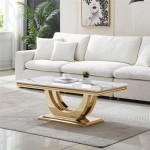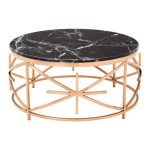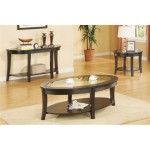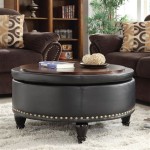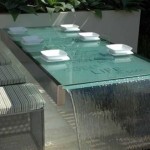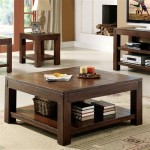How To Stage a Coffee Table: A Guide to Elevated Home Aesthetics
The coffee table, often positioned at the heart of a living room, serves as both a functional surface and a crucial element of the room's overall aesthetic. Staging a coffee table effectively transforms it from a mere receptacle for remote controls and beverages into a decorative centerpiece that enhances the visual appeal of the entire space. Effective staging creates an environment that suggests livability, style, and attention to detail.
The process of staging a coffee table involves careful consideration of several factors, including the table's size and shape, the surrounding furniture and decor, and the intended style of the room. The goal is to create a balanced and visually appealing arrangement that complements the existing design elements without overwhelming the space. Strategic placement of objects, consideration of texture and color, and awareness of negative space are all essential components of successful coffee table staging.
Unlike simply decorating a surface, staging a coffee table aims to create a curated and inviting atmosphere. The objects placed on the table should tell a story, hint at the lifestyle of the occupants, and integrate seamlessly with the overall design theme. A well-staged coffee table contributes to a sense of completeness and sophistication in the living room, subtly influencing the perception of the entire home.
Understanding Scale and Proportion
One of the foundational aspects of coffee table staging involves understanding scale and proportion. The objects placed on the table should be appropriately sized in relation to the table itself and the surrounding furniture. Overly large items can make the table appear cluttered and cramped, while objects that are too small may seem insignificant and lost on the surface. Achieving a balanced visual weight is crucial for creating a harmonious and visually pleasing arrangement.
Consider the height of the objects in relation to the coffee table's surface. Varying heights creates visual interest and prevents the arrangement from appearing flat or monotonous. Taller items, such as a stack of books with a decorative object on top, can be balanced by shorter, wider items like a tray or a bowl. The objective is to create a dynamic composition that draws the eye and adds depth to the overall arrangement.
The shape of the coffee table also influences the selection and arrangement of objects. A round coffee table may benefit from a central focal point, such as a large vase or a sculptural object, surrounded by smaller items. A rectangular coffee table, on the other hand, lends itself well to a more linear arrangement, with items grouped in sections or along a central axis. Regardless of the shape, maintaining a sense of proportion is essential for creating a balanced and aesthetically pleasing display.
Avoid overcrowding the coffee table. Leave sufficient negative space around the objects to allow each item to breathe and to prevent the arrangement from feeling cluttered. Negative space contributes to a sense of calm and sophistication, allowing the viewer to appreciate each object individually and as part of the overall composition.
Incorporating Texture, Color, and Pattern
Texture, color, and pattern play significant roles in creating a visually appealing and engaging coffee table display. Incorporating a variety of textures adds depth and interest to the arrangement, preventing it from appearing flat or one-dimensional. Contrasting textures, such as smooth ceramics with rough linens or polished metal with natural wood, create visual intrigue and draw the eye.
The color palette of the coffee table arrangement should complement the existing color scheme of the living room. Consider selecting objects in colors that either harmonize with or provide a subtle contrast to the surrounding furniture and decor. Neutral tones, such as whites, grays, and beiges, create a sophisticated and understated look, while pops of color can add energy and personality to the space. Use color strategically to draw attention to specific objects or to create a focal point within the arrangement.
Patterns can also be incorporated to add visual interest, but should be used sparingly to avoid overwhelming the space. A patterned tray, a decorative box with a subtle design, or a throw blanket draped over the edge of the table can add a touch of personality without disrupting the overall balance. When incorporating patterns, consider the existing patterns in the room and choose complementary designs that enhance the overall aesthetic.
Think about the materials used in the coffee table arrangement. Combining different materials, such as glass, metal, wood, and fabric, adds visual richness and prevents the display from appearing monotonous. A glass vase filled with fresh flowers, a metal sculpture, a wooden bowl, and a stack of books with fabric covers can create a dynamic and layered composition that appeals to the senses.
Essential Elements of a Staged Coffee Table
While the specific objects used to stage a coffee table will vary depending on the style of the room and the personal preferences of the homeowner, certain elements are commonly found in successful arrangements. These elements provide a foundation for creating a balanced and visually appealing display that enhances the overall aesthetic of the living room.
Books are a classic and versatile element for staging a coffee table. Stacking several books of varying sizes and colors can create a visually interesting base for other objects. Choose books that reflect the interests of the homeowner or that complement the overall design theme of the room. Art books, design books, and travel guides are popular choices. Top the stack with a decorative object, such as a small sculpture, a candle, or a plant, to add height and visual interest.
Trays are another essential element for staging a coffee table. Trays provide a designated space for grouping objects and can help to contain smaller items, preventing the arrangement from appearing cluttered. Choose a tray that complements the style of the coffee table and the surrounding furniture. Metal trays, wooden trays, and lacquered trays are all popular options. Use the tray to group items such as candles, coasters, and decorative objects.
Greenery, in the form of plants or flowers, adds a touch of life and freshness to the coffee table arrangement. A small potted plant, a vase of fresh flowers, or a few sprigs of greenery can instantly brighten up the space and create a more inviting atmosphere. Choose plants that are easy to care for and that complement the overall style of the room. Succulents, air plants, and orchids are popular choices. If using fresh flowers, be sure to change the water regularly and replace the flowers as needed.
Decorative objects, such as sculptures, candles, and bowls, add personality and visual interest to the coffee table arrangement. Choose objects that reflect the interests of the homeowner or that complement the overall design theme of the room. A sculptural object can serve as a focal point, while candles can add warmth and ambiance. Bowls can be used to hold decorative items, such as potpourri or decorative stones. When selecting decorative objects, consider the size, shape, and color of the objects in relation to the other elements in the arrangement.
Coasters are a practical and stylish addition to a staged coffee table. Choose coasters that complement the overall design theme of the room and that protect the surface of the table from water rings and stains. Coasters can be made from a variety of materials, such as wood, metal, stone, or cork. Consider using a coaster set that includes a holder or a tray to keep the coasters organized and accessible.
A throw blanket, casually draped over the edge of the coffee table, can add a touch of warmth and texture to the arrangement. Choose a throw blanket that complements the color scheme of the room and that is made from a soft and comfortable material. A throw blanket can also serve as a practical accessory, providing a cozy layer for chilly evenings.
By carefully considering these essential elements and incorporating them into a balanced and visually appealing arrangement, one can effectively stage a coffee table to enhance the overall aesthetic of the living room and create a more inviting and sophisticated space.

Coffee Table Staging Home Institute

How To Style A Coffee Table 7 Tips From Professional Property Stylists Foxy Home Staging

Coffee Table Staging Home Institute

Fab Coffee Table Staging Ideas You Will Want To Try

Fab Coffee Table Staging Ideas You Will Want To Try

How To Style A Coffee Table With Studio Mcgee Inspired By This

Styling Your Coffee Table To Help House Homestagingbrisbane

Staging A Table Expert Home Tips 2025 Guide

Coffee Tables Everything You Need To Know Styling Tips

The Trick To Mixing Modern And Traditional Furniture Laurel Home
